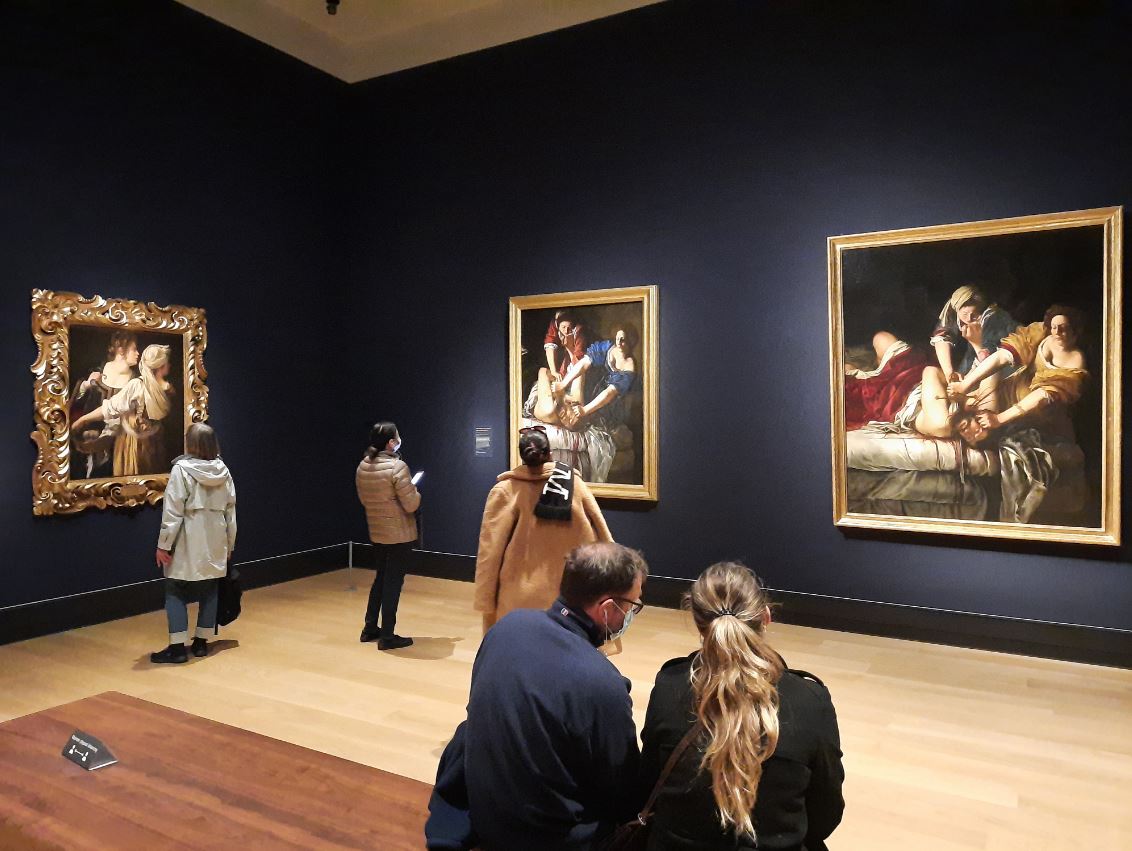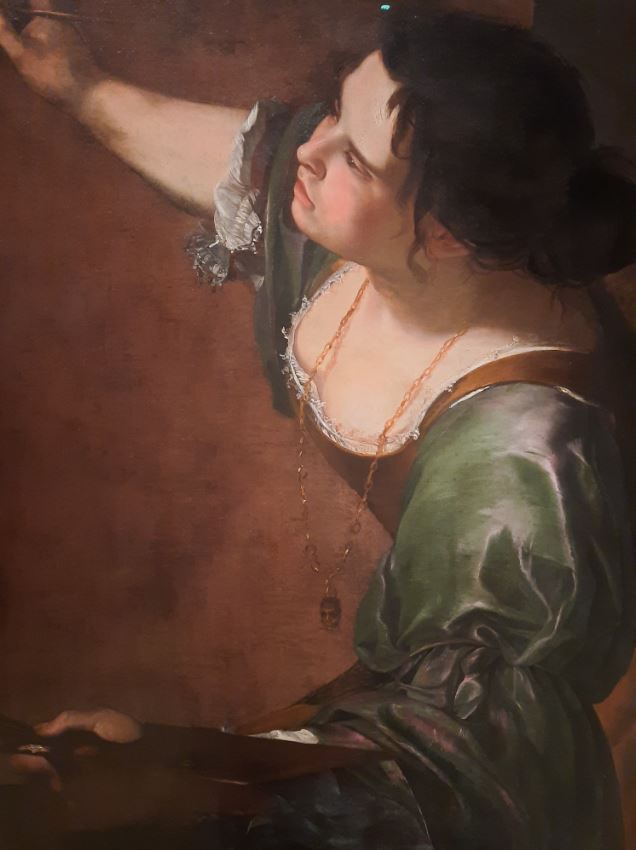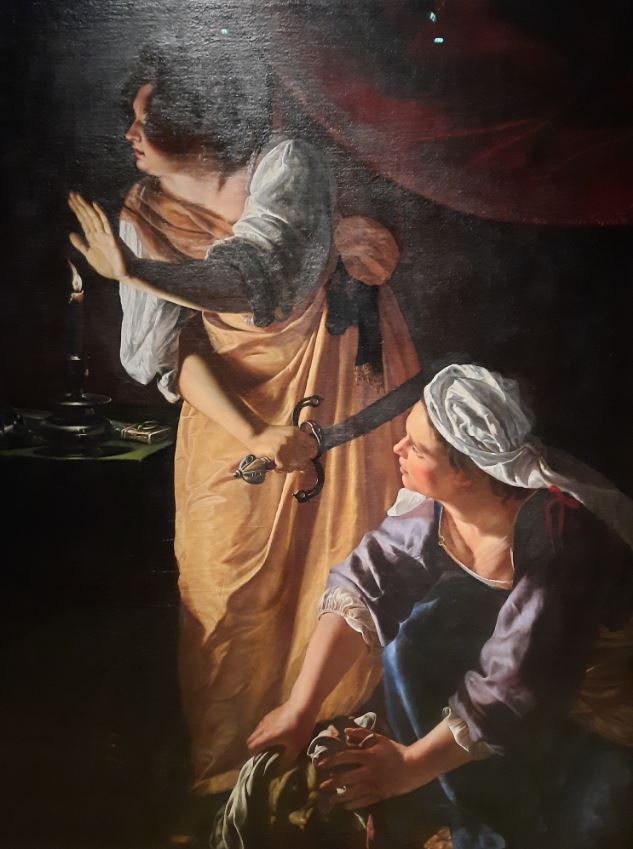Artemisia – National Gallery, London
Review of Artemisia at the National Gallery. Oh my goodness, blockbuster show of the season it might be, but not a good visitor experience!
The National Gallery’s Blockbuster of 2020
The National Gallery billed Artemisia as the long overdue blockbuster of the year long before Covid. I was therefore very excited that they were able to open it after several months’ delay! In fact I was so excited I saw it soon after opening week in October, which might have been a mistake. I am going to try hard to review the exhibition itself before I launch into why my experience was not satisfactory. I had been to the National Gallery already since lockdown to see Titian, and had found the Covid measures a bit confusing but mostly fine, so this was a bit of an unwelcome surprise. But anyway, I’ve distracted myself from telling you about the exhibition.
Introduction to Artemisia Gentileschi
Artemisia is, as the title would suggest, an exhibition of the works of Artemisia Gentileschi. Daughter of artist Orazio Gentileschi, she learned to paint in his studio. Originally she worked in a Carravaggesque style but overall belongs more to the Baroque school. Artemisia was highly accomplished in her own right. She surpassed her father as this exhibition shows, and was the first woman admitted to the Academy in Florence. She had a clientele that included both international and royal patrons.
However, the more salacious details of her life have tended to overshadow her professional achievements. While still a teenager the artist Agostino Tassi, with whom she was working, raped her. Her father pressed charges against Tassi when he reneged on an agreement to marry Artemisia to ‘restore her honour’. Artemisia endured torture as part of the court case, to ensure her testimony was truthful. The Gentileschis won, and Tassi was eventually banished from Rome. This dramatic story, along with her status as a female artist in a time when this was extremely unusual, have tended to overshadow discussion of her merit as an artist.
Artemisia as Artist and Business Woman
This is the injustice which the National Gallery intends to address in Artemisia. Over seven rooms, the exhibition first introduces this historic context, including the original court transcripts. It then goes on to make the argument for her right to a place in the art-historical canon on merit alone. Several great works on display demonstrate her prowess in imbuing her mostly female subjects with realistic emotion and power. Artemisia’s skill as a business woman is also at the forefront. Letters and documentary evidence show how managed this – moving to different Italian cities to seek out new opportunities and patrons, for example. She also sent speculative paintings to the monarchs of Europe to solicit royal patronage or commissions. This latter technique was unfortunately not particularly successful.
The exhibition ends on a trip Artemisia took to London when her father was court painter to Charles I. Comparison of paintings by father and daughter from this period show just how far her technique had surpassed his. Orazio’s subjects look particularly flat and lacking in emotion compared to his daughter’s works. Considered just in terms of the curation, then, I would count the exhibition as a success, and something which should be on everyone’s cultural radar.
Too Many Tickets Sold?
However (and this is a big however): my experience of visiting Artemisia at the National Gallery was the worst since lockdown started to lift. After due consideration, I think ticket numbers are just too high for the size of the space. They must have done modelling of expected visitor behaviour and time to see the exhibition etc. But either they were considerably off in their estimates, or have decided to increase revenue by selling additional tickets anyway.
The primary problems were queueing, and the fact that it was impossible to socially distance effectively. From start to finish of our visiting experience we had to queue eight times; once to enter the Gallery, once to enter the exhibition, and then to get into each of the rooms. Most of the time we spent longer queueing to get into the next room than we did actually looking at the contents of the room we were in.
Stressful Visitor Experience
It was not the fault of the staff, but they were not equipped to handle this. They were having to balance crowd control with managing a couple of bits of bad exhibition design. For example the first painting as you enter is one of the few which you can’t take pictures of. The staff describe this as ‘clearly indicated’, but it’s in small white writing which you can’t see if you’re trying to keep your distance, so they spend a lot of unnecessary time enforcing this. Rooms were often over capacity as the previous room had become even worse, limiting opportunities for staying socially distanced.
It was really not well managed, and the absolute opposite of my blissful visit to the Royal Academy to see Gauguin and the Impressionists, where they either have better modelling techniques or have made the conscious decision to keep numbers low. It’s only in hindsight that I’ve been able to think about the exhibition’s aims and whether they were successful. The physical experience of trying to get around safely and in a timely manner distracted me almost completely.
So even though it’s objectively a good exhibition, my advice would be to wait a while. Perhaps they will sort out the numbers, or since we’re in lockdown again maybe you can just do a virtual tour if they have one. Really poor visitor experience, I hope they do better next time as Artemisia deserves better!
Salterton Arts Review’s rating: 4/5 for the exhibition, 2/5 for the experience
Artemisia until 24 January 2021 [now subject to change due to lockdown]
If you see this after your page is loaded completely, leafletJS files are missing.








4 thoughts on “Artemisia – National Gallery, London”